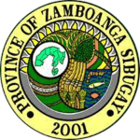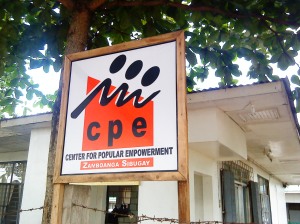Participatory Local Development Planning in Mindanao for Peace and Development BDP-PLA in Zamboang Sibugay
 Poverty remains to be major problem being experienced in the 16 municipalities of the province. In 2003, Zamboanga Sibugay, still part of Zamboanga del Sur, was one of the 10 poorest provinces in the country. There are now 76 provinces in the Philippines. Currently, the province is listed as still part of the 10 poorest provinces. The situation did not improve overtime because the province is still listed as one of the food poorest provinces. Even in terms of education, the province’s Net Enrolment Ratio went down drastically, having the largest decrease in 2006 at 12.1%. Poverty threshold also increased from
Poverty remains to be major problem being experienced in the 16 municipalities of the province. In 2003, Zamboanga Sibugay, still part of Zamboanga del Sur, was one of the 10 poorest provinces in the country. There are now 76 provinces in the Philippines. Currently, the province is listed as still part of the 10 poorest provinces. The situation did not improve overtime because the province is still listed as one of the food poorest provinces. Even in terms of education, the province’s Net Enrolment Ratio went down drastically, having the largest decrease in 2006 at 12.1%. Poverty threshold also increased from
Php9,580 in 2003 to Php12,188 in 2006.
One major intervention to address the problem of poverty and delivery of services was for all the local government units to have a clear development plan. Priority programs were identified –from the barangay level, up to municipal and provincial. In 2008, the provincial administration, in partnership with the Center for Popular Empowerment (CPE), embarked on building the capacities of local governments and civil society organizations by formulating participatory barangay development planning and budgeting. This endeavour covered 150 barangays as pilot projects, out of the total 389 barangays in the province in 8 out of 16 municipalities.
However, amidst the inflow of various funds from donor agencies , local planning system in the province, as well as all of the municipalities, has been generally weak,. There is a lack of both horizontal linkages among sectoral concerns and vertical linkages (barangay to munic
ipalities, municipalities to barangay and vice versa). Plan-to-budget linkage was also found wanting.. To compound problems even more, the supposed body mandated by law to formulate comprehensive plans and integrate them—the local development councils—are mostly inactive. These factors lead to inefficient and ineffective delivery of basic services and allocation of local government resources.
Zamboanga Sibugay has 16 municipalities and 389 barangays.. These municipalities are Ipil, Kabasalan, Naga, R.T. Lim, Siay, Titay, Tungawan, Alicia, Buug, Diplahan, Imelda, Mabuhay, Malangas, Olutanga, Payao and Talusan. The whole province has a total of 101,131 households. There are 38,868 families categorized as poor families, according to 2006 survey of the National Statistics and Coordination Board. The province is home to diverse ethnic communities: Tausug, Subanen, Maguindanao, Samal, Kalibugan, Maranao and Yakan.

As to income levels, Zamboanga Sibugay is classified as third-class province. Among the sixteen (16) municipalities, one (1) is classified as second-class municipality, one (1) as second-class municipality, nine (9) are classified as fourth-class municipalities, and five (5) municipalities are classified as fifth class.
The partnership was established when Mr. Jet Hofer sought the assistance of CPE early 2009. A team was organized to
assist in the implementation of participatory local development planning and budgeting in 60 barangays in the province of Zamboanga Sibugay. The project head is Mr. Gromeo Bilugan, a veteran and trained BDP-PLA facilitator.
A pledging session is being prepared for October 2009. The pledging session is expected to bring in support and pledges from different agencies and institutions for the development programs of the pilot barangays.
The participatory local development planning in the province is a step towards realizing an accountable and responsive type of local governance. Being a province where traditional politics have reigned for decades, the process of people identifying themselves priority development programs is a welcome development in allocating budget and prioritizing projects by local governments. It also helps in the process of building empowered citizenry wherein people are being drawn in to participate in local decision-making process and analyzing their situation.
You must be logged in to post a comment.